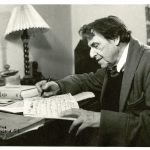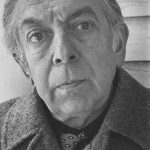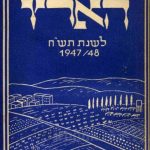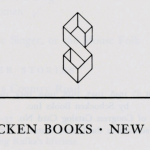Franz Kafka
Throughout his publishing career, Schocken considered the works of Franz Kafka to be his most valuable publishing asset. Franz Kafka (1883 – 1924) was a Czech-Jewish novelist who wrote in German. After his death in 1924, Kafka’s closest friend, Max Brod, approached many publishers in an attempt to bring out Kafka’s collected works. Although Martin Buber and Hermann Hesse supported Brod’s efforts, few publishers dared to become involved amid the anti-Semitic wave that took hold in Germany.
In 1933, nine years after Kafka’s death and under the Nazi regime, Brod turned to Schocken. Schocken, who was immediately struck by Kafka’s genius, consented enthusiastically and resolved to make him the centerpiece of his publishing project. An advertisement written by Hermann Hesse said that Kafka “bears witness to our inwardly torn and suffering time… Gifted in the art of pondering and suffering … his art possesses a magical key that not only opens us to mere confusion and tragic visions, but also to beauty and a sense of comfort.”
Klaus Mann, in an exile journal in Amsterdam, characterized Schocken’s collected works of Kafka as “the most noble and significant publication to have come out of Germany.” He commended Schocken for orchestrating a momentous “spiritual event” in “splendid isolation” from the barrenness and dull conformity of the “neo-Germanic cultural machine.” He went on to question whether there was anyone left in the Third Reich “able and willing to enjoy fully this lofty, difficult, and objectively perfect” prose.
In 1936, the Nazi authorities barred Schocken from continuing to publish Kafka. After the end of World War II, Schocken published editions of Kafka’s works, both in Tel Aviv and New York. Today, Kafka is widely regarded as one of the greatest writers of the 20th century.






